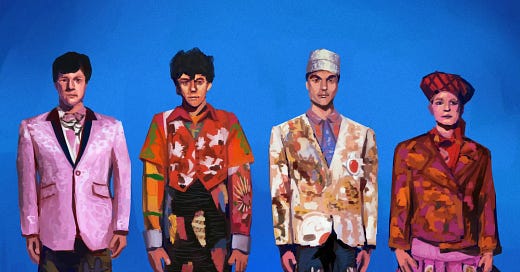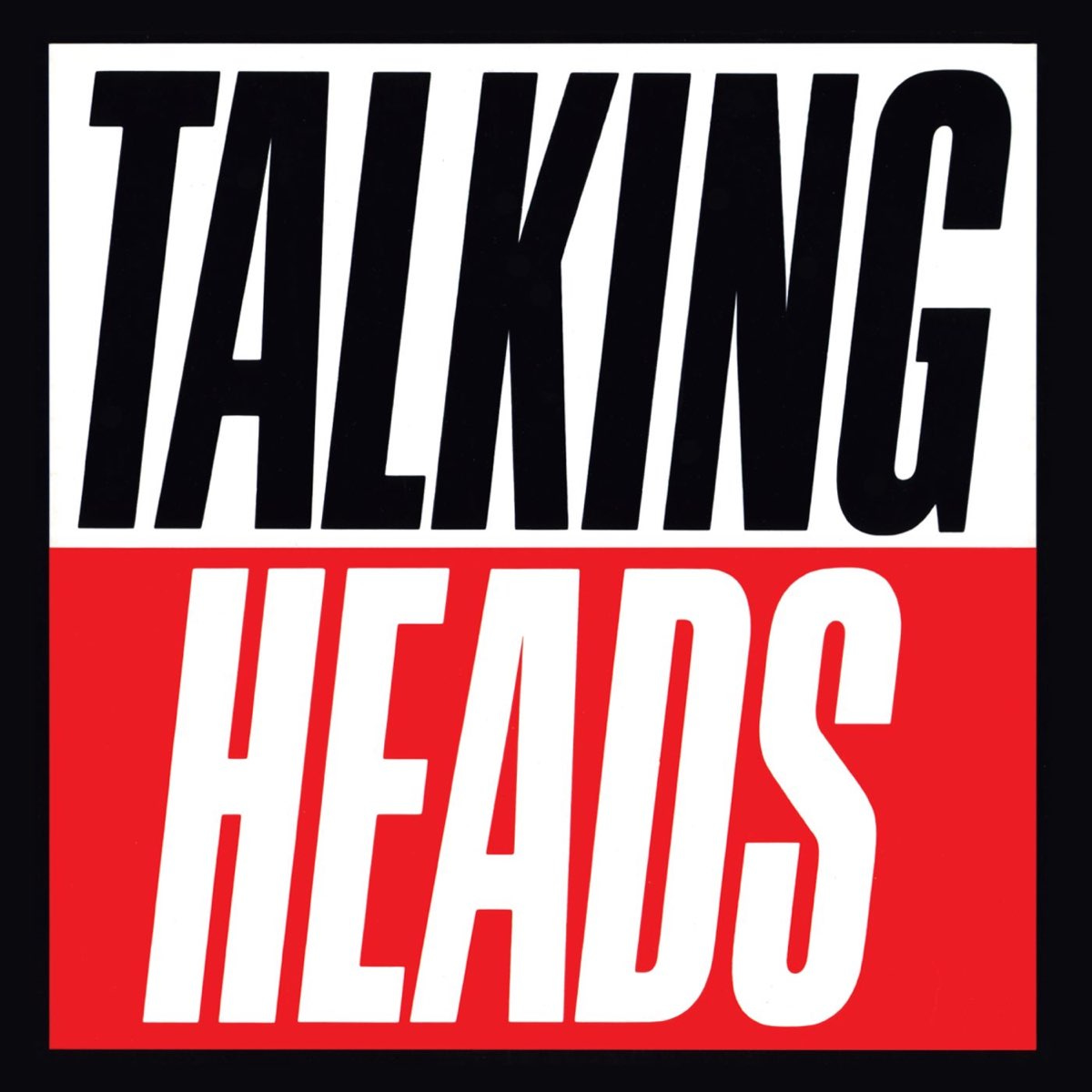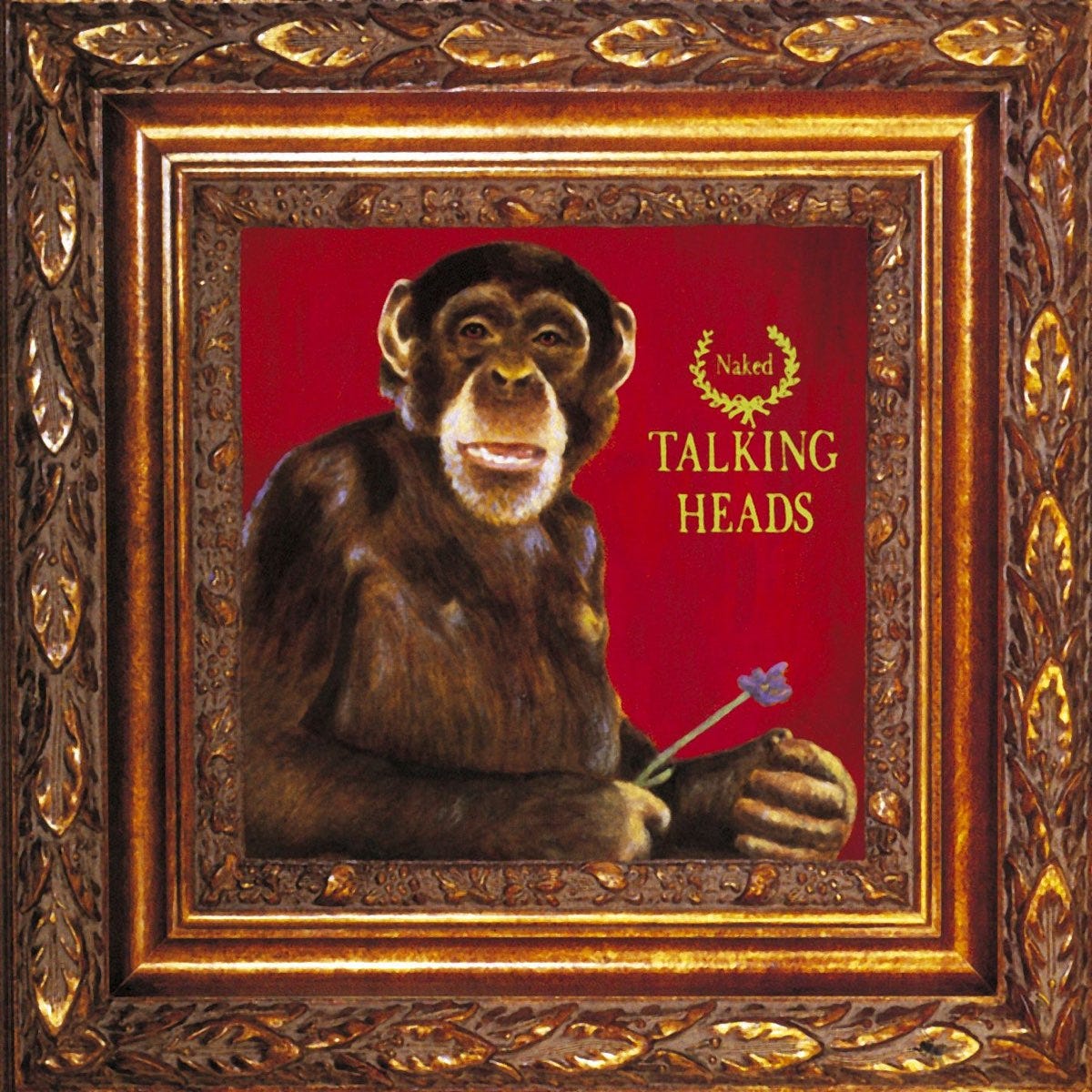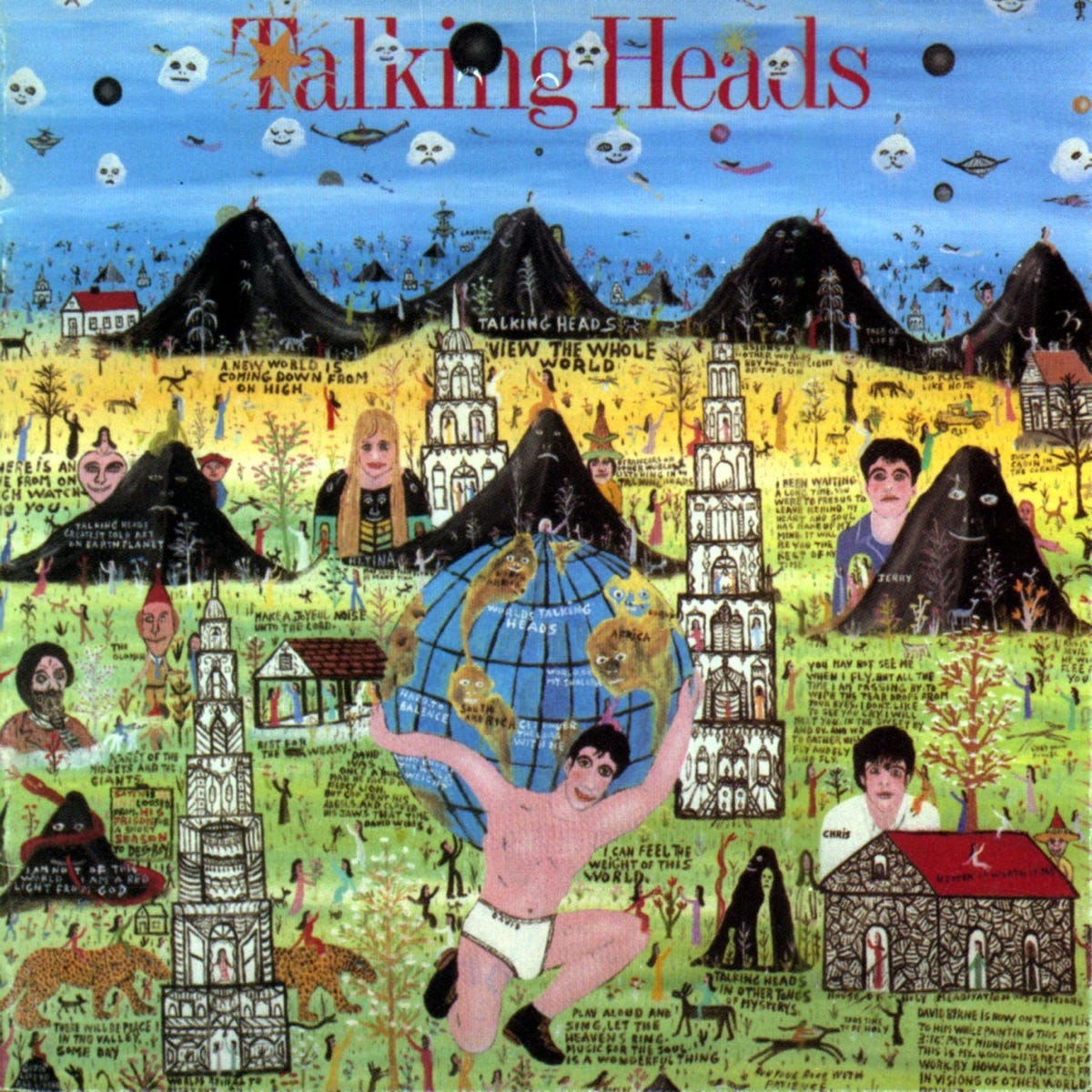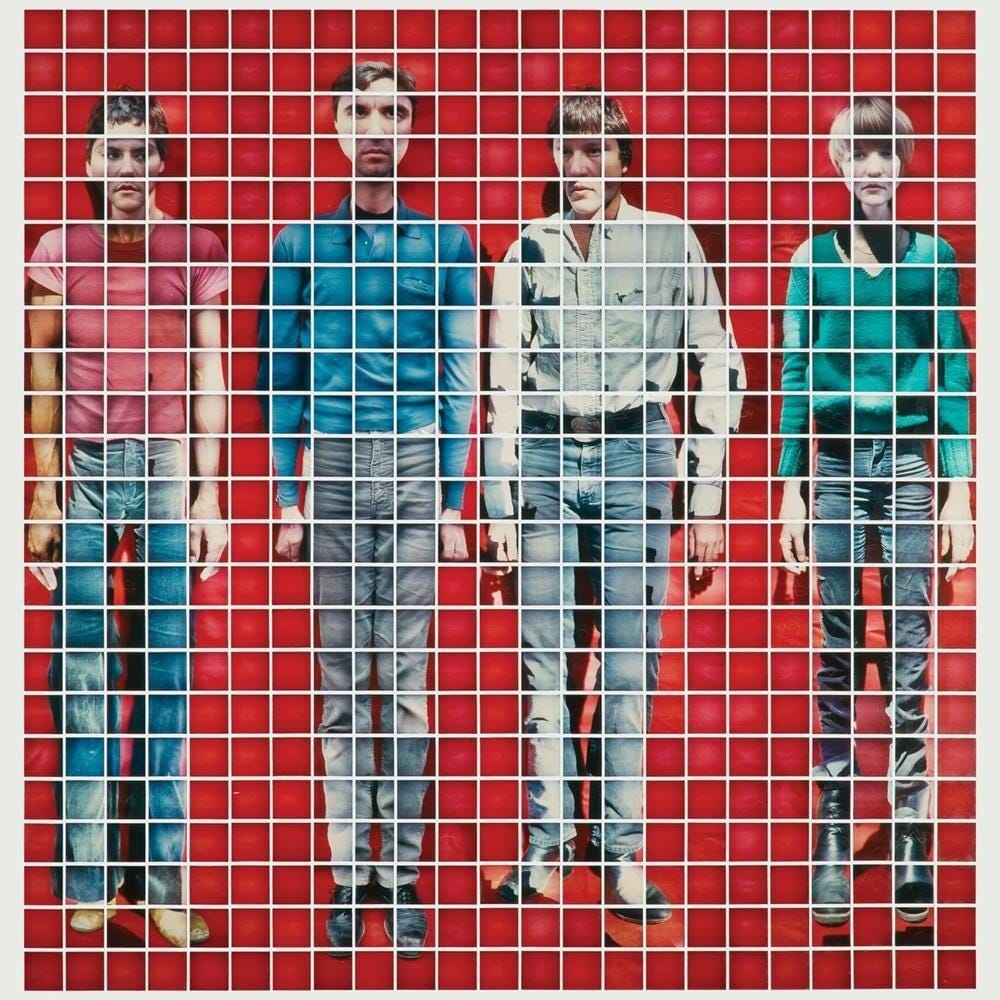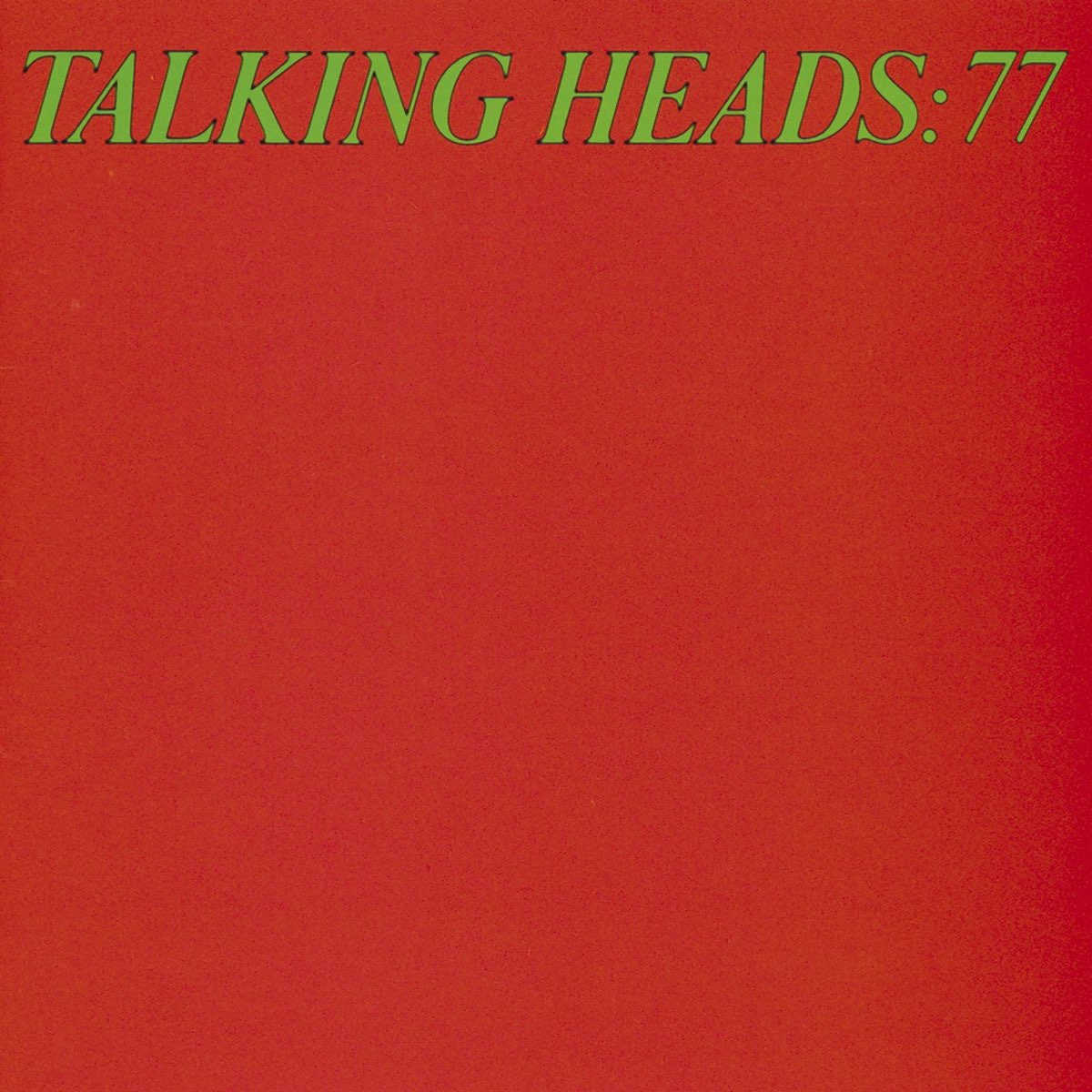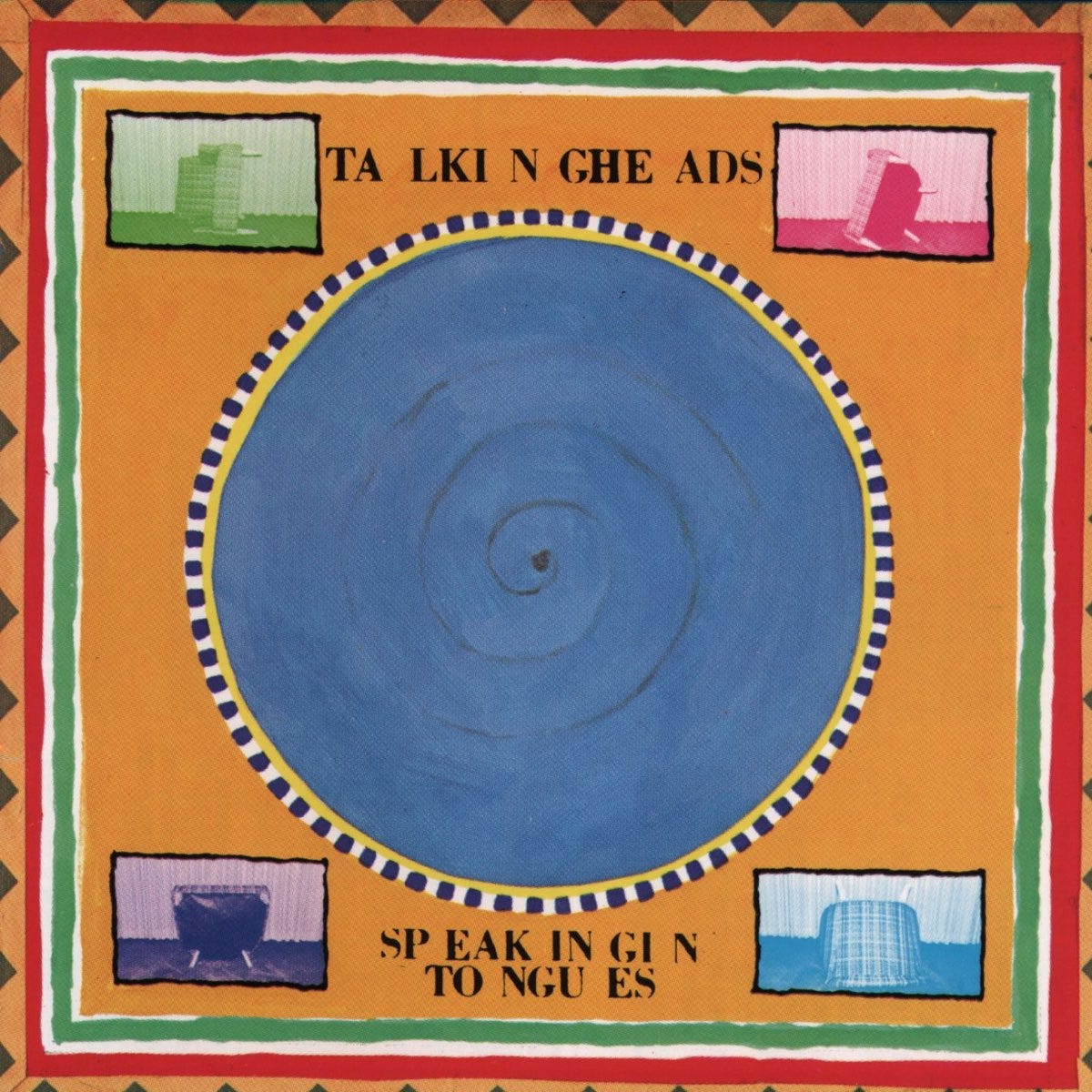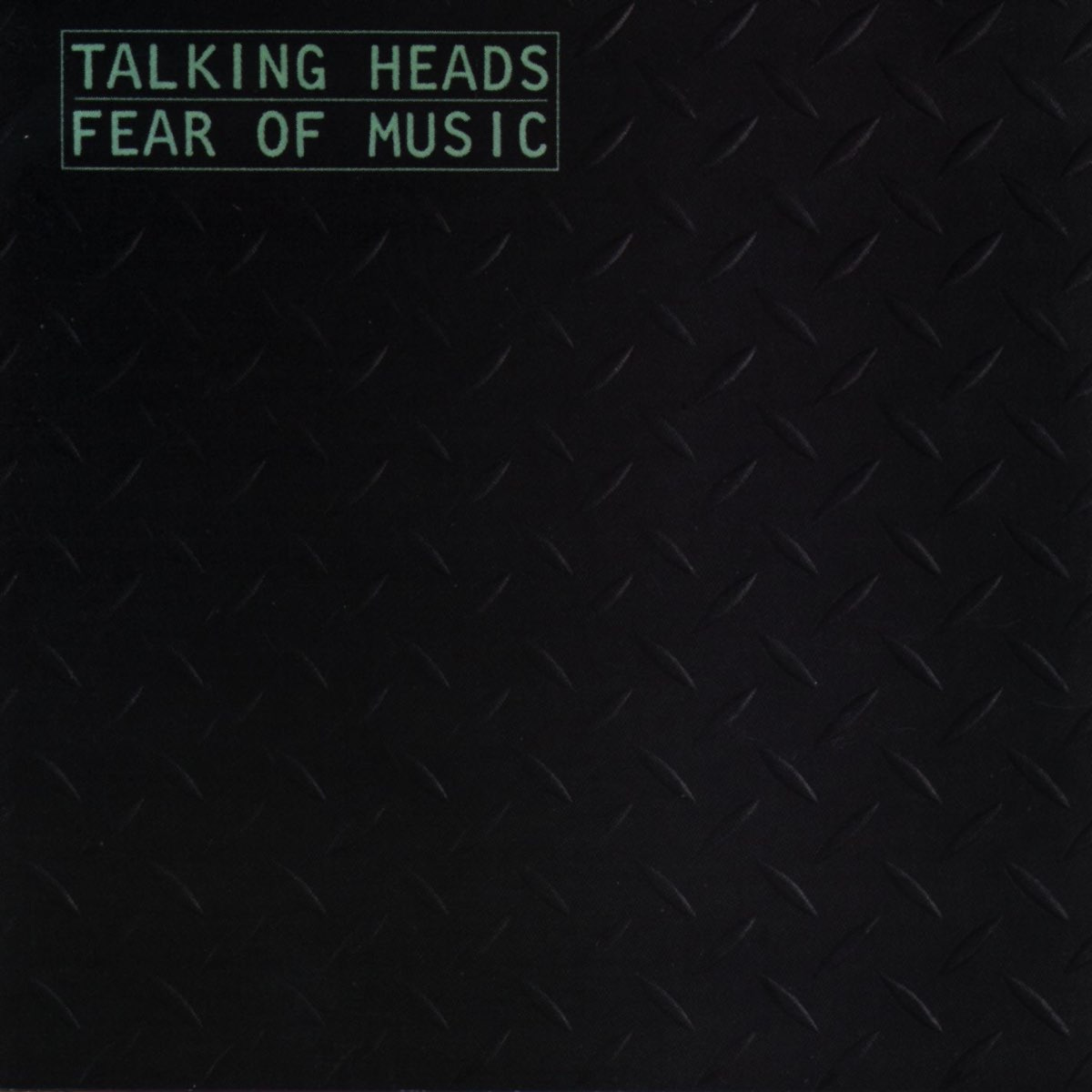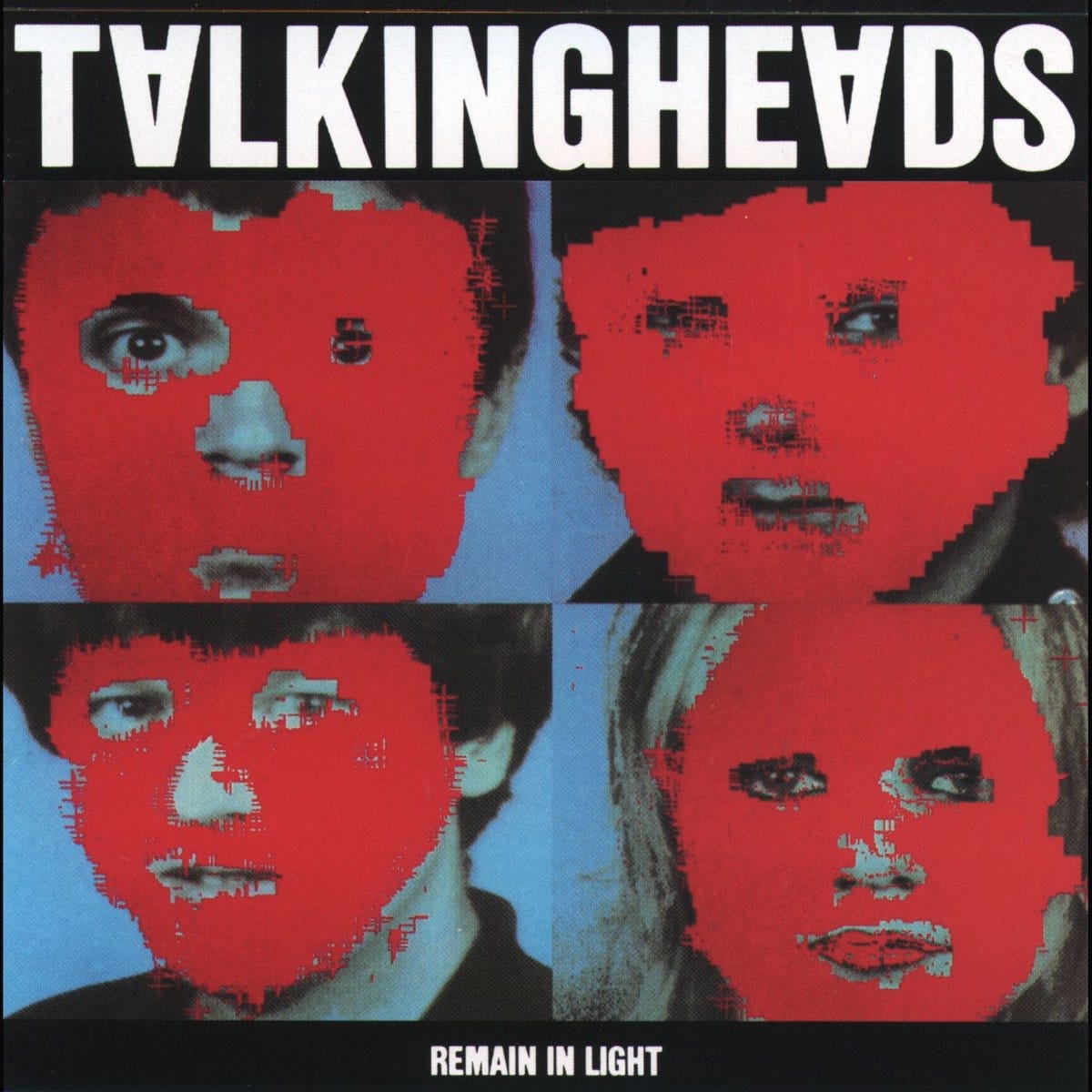I’m about to say something no self-respecting music critic has ever dared to admit: I am not a huge fan of Talking Heads.
Well, at least I wasn’t before making this list. Don’t get me wrong, I knew the hits —and liked a lot of what I heard — but for years, the Heads had been an embarrassing blind spot in my musical knowledge. Luckily, that was a problem this series seemed well-suited to solve. Eight albums, two films, and a couple dozen readings later; I can finally say that I’ve sat down and given Talking Heads their due diligence. I’m still far from an expert, but with the full range of their discography under my belt, I’m pleased to report: this must, indeed, be the place.
The appeal of Talking Heads is easy to get, but harder to try and explain. Somewhere between the intersection known and unknown, dorky and cool; that’s where they like to hang out. They carry an undeniable hypnotism, an idiosyncratic X-Factor that simply must be heard to be understood. Consisting of vocalist/guitarist David Byrne, drummer Chris Frantz, bassist Tina Weymouth, and keyboardist/guitarist Jerry Harrison, the band rewrote the script of New York’s punk scene with a style so forward-thinking it literally necessitated the invention of a new term (New Wave).
Over the course of roughly a decade, Talking Heads continued to push the limits of what critics and audiences conceived of as “American music.” In both style and substance, they blended disparate influences and styles with a refreshingly non-cynical vigor. The result is one of the most beloved and critically acclaimed discographies in music history, and they remain as timelessly charming today as they were when they first took the stage at CBGB.
Before we begin, I should address the 1,984 pound elephant in the room: no, I will not be including Stop Making Sense. Hear me out! Hear me out! Is it one of Talking Heads’ most iconic releases? Yes. Is it quite possibly their best album? Also yes. Should it count as a contender for a ranking of the band’s studio LPs? I’d argue, no. The brilliance of Stop Making Sense lies in how clearly it curates and communicates the evolution of Talking Heads. This is an ethos that I believe runs antithetical to how most studio albums are made, so I therefore think that comparing the two would be a little bit like apples to oranges. Make sense? Doesn’t matter. I also will not be including the 1996 oddity No Talking, Just Head or solo material from any of the members or their side projects.
Now, with all that housekeeping out of the way… let’s see what a recent Talking Heads devotee thinks of their catalog (Spoiler Alert: it’s pretty similar to, like, every other ranking.)
8. True Stories (1986)
When you find out just how little the band even wanted to make it, you can actually hear Talking Heads’ disinterest throughout True Stories. The tale goes that during production of the True Stories film — David Byrne’s masterpiece about middle-America eccentricity — Sire Records basically insisted that the original songs Byrne had written for the movie be turned into a Talking Heads record. Thus, we got the band’s seventh studio album, an unexceptional and largely uninspired echo of their poppiest sensibilities. And… um… I kind of like it? Maybe it’s just my love for the True Stories film talking, but this album’s kitschy commercialism really connects with me at more than a few points. That being said, it’s still the worst record Talking Heads ever released. This is due to a general hollowness throughout; a regurgitation of 80’s trends that fails to capture the same flair as the band’s other pop efforts. Some of the songs wind up sounding downright terrible (“Love For Sale”), but a few deep cuts manage to maintain my interest (“Radio Head”). If all of that sounds like your cup of tea…? Just watch the movie.
Favorite Track: Radio Head
7. Naked - 1988
Aside from the laughably bad cover art, there sadly isn’t much of anything noteworthy about Talking Heads’ final studio album. Honestly, though, when you consider just how high tensions within the band were at the time, it’s amazing Naked didn’t end up a complete shit-show. On paper, the ideas behind this album sound incredibly promising: a return to the worldbeat stylings of the band’s peak output, recorded through improvisational jam sessions with a litany of outside musicians. In practice, however, Naked’s songs are disappointingly half-baked and retread too many familiar themes to feel truly original. It certainly has its moments — largely thanks to the many Latin and Caribbean influences — but the totality of Naked really can’t hold a candle to what Talking Heads was capable of at their best. Additionally, as the longest album in their entire discography, the odds are already stacked against this one from the get-go. When all’s said and done, Naked is an inoffensive but mostly forgettable swan song for one of the most exciting rock bands in American history, and you’re probably better off just revisiting their golden years.
Favorite Track: Totally Nude
6. Little Creatures (1985)
Six albums deep, the poster children of New Wave experimentation made their most daring move yet: Talking Heads released a pop album. Jaunty, joyous, and wide-eyed, Little Creatures is the band’s most commercially successful record by a wide margin. Consisting of what David Byrne called “very conventional songs,” this album tackles normalcy not only in its thematic fascinations with love, sex, and peace, but also via a newfound appreciation for 80’s instrumentation. The drums are bombastic, the bass-lines are thrumming, and the keys get downright silly at times. Don’t be fooled, however: Little Creatures is still plenty weird when taken in context of what the rest of pop sounded like in 1985. Cuts like “Give Me Back My Name” and “Stay Up Late” are characteristically unnerving, and tracks like “Walk It Down” and “Perfect World” invite influences reminiscent of 1983’s Speaking in Tongues. It’s not a perfect record, and the overt accessibility certainly limits this album’s indispensability to the Heads’ discography, but there’s no denying the sheer, toddling fun to be found throughout Little Creatures.
Favorite Track: Creatures of Love
5. More Songs About Buildings and Food (1978)
“What are we gonna call an album that’s just about buildings and food?” joked Tina Weymouth during the creation of Talking Heads’ sophomore LP. Well, as it turns out, she nailed it. More Songs About Buildings and Food takes the sparse, stilted sound of the band’s debut and develops it into something denser, more cerebral, and far more obsessed with Americana. This is thanks in large part to producer Brian Eno, who coils the band’s already tensile energy into a giddily awkward bundle that spasms from track to track without warning or care. The guitar licks are jerky, the drums are stubbornly loping, and Bryne’s lyrical subject matter is even more alienated and misanthropic than usual (“I believe someday we’ll live in a world without love”). It’s certainly inspired at times (see the band’s iconic cover of Al Green’s “Take Me to the River”), but this approach unfortunately does lose a bit of the band’s natural potency. While a definite technical improvement over their debut, More Songs About Buildings and Food fails to capture the raw ingenuity of the best Talking Heads’ records, but that doesn’t mean it’s not worth your time.
Favorite Track: Warning Sign
4. Talking Heads: 77 (1977)
Despite making their CBGB debut a mere two years prior, the excitement for Talking Heads’ debut record amongst the New York punk scene was electric. Before they had even put a song to wax, the singular charisma of the band’s live performances carried them into the zeitgeist of the city’s musical counter-culture. Talking Heads: 77 is the realization of that protozoic potential; culminated into a wholly original and punchy 38-minute runtime. There’s a palpable tension throughout this record, a general stiffness which keeps you hanging on every note like bated breath in an uncomfortable conversation. It’s downright chilling at times, such as the lunatic logic of surprise hit single “Psycho Killer,” or David Byrne’s bold-face dismissal of empathy on “No Compassion.” It can be difficult to tell if the band’s ingenuity is the result of prophetic ambition or merely a naïveté to traditional limitations, but that’s also what makes it so fucking fun. Unfortunately, the production is noticeably flat across the board (producer Tony Bongiovi was famously out of sync with the band’s vision), but there’s still nothing quite like the raw, pre-pubescent freakishness that is Talking Heads: 77.
Favorite Track: The Book I Read
3. Speaking in Tongues (1983)
Coming off a two-year hiatus, Talking Heads faced a daunting challenge when they sat down to craft their fifth studio album: how the hell do you follow up Remain in Light? The answer, it seems, came down to two things. First, they ended their creative partnership with Brian Eno, opting instead to produce the entire project themselves. Second, they took what worked about Remain in Light — collaborative synergy, groovy polyrhythms, wide-ranging genre-fusion — and smoothed it into a chart-friendly package. The result was 1983’s Speaking in Tongues, which fully embraced the band’s funky potential and catapulted them into the mainstream. Repetitive, lyrically sparse, and hypnotically danceable; these nine tracks take you on a globe-trotting tour of instrumentation and rhythm. It’s all still delivered with the Heads’ signature stiffness, creating a mesmerizing rubber-band between flexibility and rigidity. Truly, the beauty of Speaking in Tongues lies in how much fun Talking Heads has coloring inside the lines.
Favorite Track: This Must Be the Place (Naive Melody)
2. Fear of Music (1979)
If the album cover and title weren’t indication enough, Talking Heads’ third album is all about feeling bad. The band’s second collaboration with Brian Eno, Fear of Music is the beginning of an experimental chain reaction that would come to define the their most iconic material. Pulling far more from electronic and industrial influences than their previous albums, this record is a jarring twist on the mathy disco and angular New Wave the band was known for. From the Dadaist nonsense of opener “I Zimbra” (a direct inspiration for the band’s follow-up record) to the guerilla narratives of “Life During Wartime,” these songs’ lyrics are rooted in paranoia and unease. Moments of reprieve do manage to cut their way through the barbed wire; such as the blissful simplicity of “Heaven,” but they’re few and far between. Despite so much malcontent, the head-nodding bass-lines and ear-wormy melodies ironically make for one of the most danceable LPs in Talking Heads’ entire catalog. Altogether, Fear of Music is an endlessly exciting and voraciously creative album. Unfortunately, it had to come up against my Number One pick…
Favorite Track: Air
1. Remain in Light (1980)
Was there any doubt? Rightfully regarded as one of the best albums ever made, Remain in Light is a postmodern masterpiece which both necessitates and negates its own creative process. Born of David Byrne and Brian Eno’s shared love for Afrobeat (specifically Fela Kuti’s Aphrodisiac), these songs were written via extended jam sessions, of which the band would choose bits and pieces to memorize and then play in a repeated loop. The result is a dense collection of polyrhythmic experimentations, perfectly arranged into eight incredible tracks. Top that off with David Byrne’s ramblings on war, terrorism, and general dread — not to mention “Once In a Lifetime,” (in)arguably the best Heads song ever recorded — and you’ve got yourself a recipe for the definitive entry in an indefinable discography. Remain in Light is a celebration of the primordial power of music, and you’d have to be somewhat inhuman to not succumb to the pull of its emotional and physiological influence.
Favorite Track (That Isn’t Once In a Lifetime): Listening Wind

